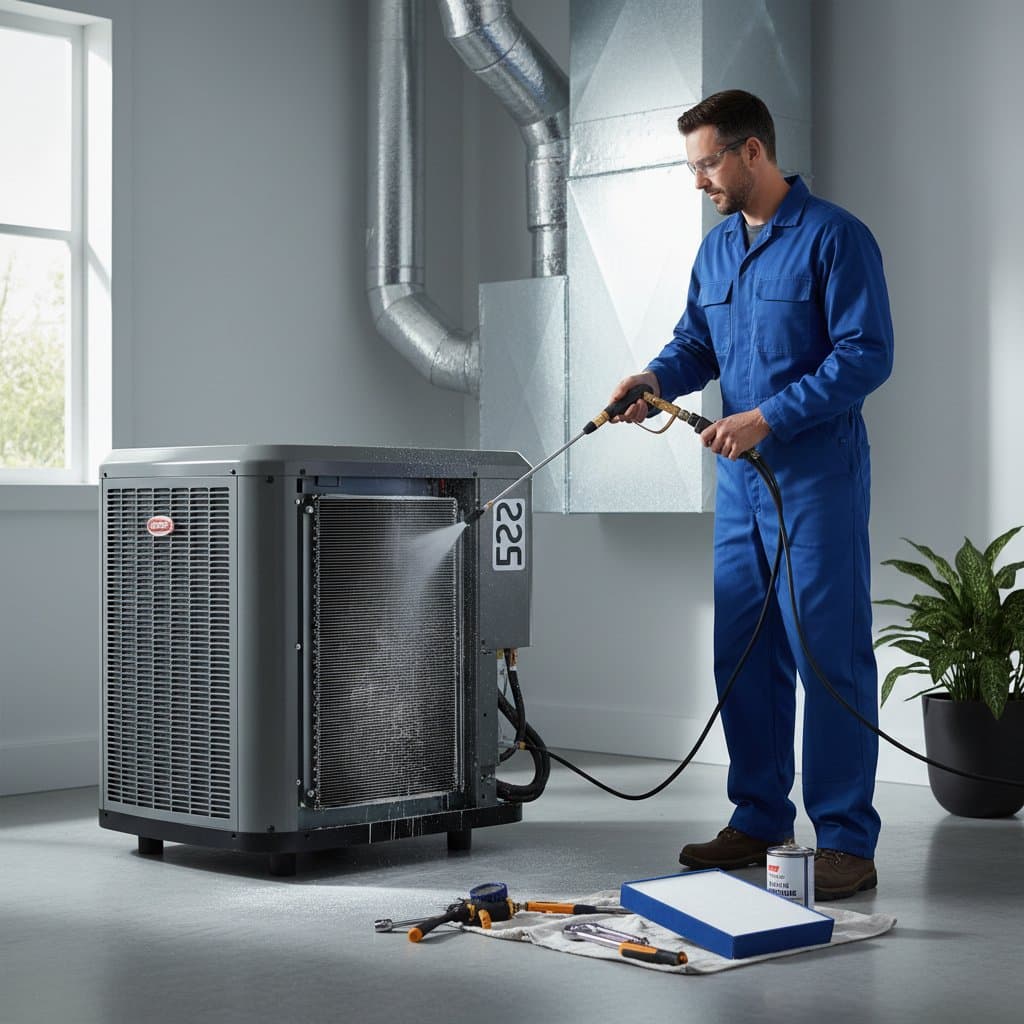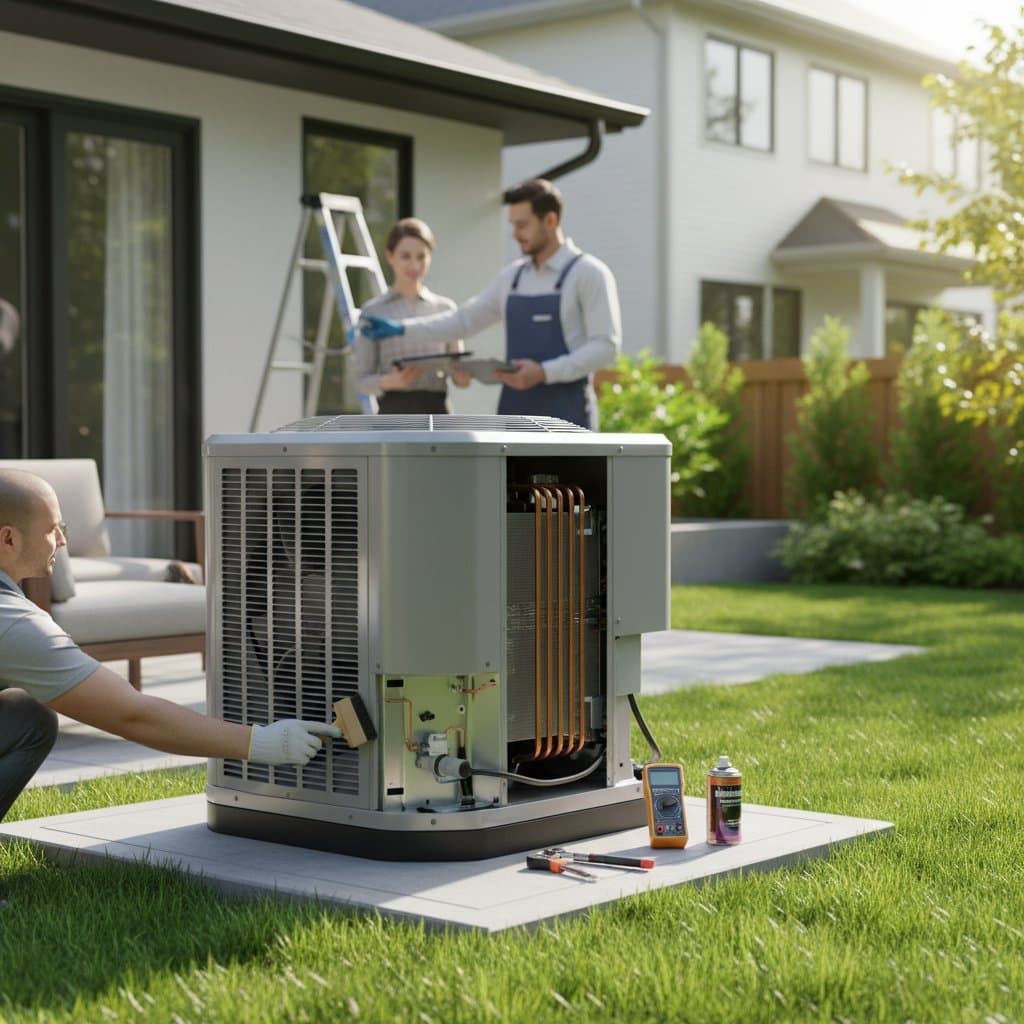Prepare Your AC for Summer with This 2025 Tune-Up Guide
Summer heat demands a dependable air conditioner to maintain home comfort. Proper maintenance of the system not only ensures consistent cooling but also minimizes energy consumption and averts major breakdowns. By addressing key areas before temperatures rise, homeowners achieve optimal performance from their units. This guide outlines essential steps for a thorough tune-up, suitable for DIY efforts or professional assistance.
Clear Debris from the Outdoor Condenser Unit
The outdoor condenser unit requires unobstructed airflow to function efficiently. Accumulated grass, leaves, or soil hinders ventilation and forces the compressor to work harder, leading to overheating and increased energy use.
Follow these cleaning procedures:
- Disconnect power to the unit via the circuit breaker for safety.
- Clear away all visible debris from the coils and nearby surfaces.
- Trim back any plants or shrubs to maintain at least two feet of clearance around the unit.
- Gently brush off dirt from the fins or rinse with a garden hose set to low pressure.
High-pressure sprays risk damaging the thin fins, so proceed with care. For heavy accumulations or deformed fins, engage a professional service to restore proper operation without further harm.
Examine Ductwork for Leaks and Accumulation
Inefficient duct systems compromise cooling distribution and raise energy demands. The U.S. Department of Energy estimates that leaks may cause up to 30 percent loss of cooled air, straining the entire setup.
Conduct a basic inspection with these methods:
- Visually scan for separations at seams, joints, or connections.
- Operate the system and pass your hand over duct surfaces to detect air leaks through touch.
- Apply UL-rated foil tape or mastic sealant to repair minor gaps.
Periodic duct cleaning removes built-up dust, mold, and allergens that reduce airflow. Systems in older homes or those affected by construction dust benefit from expert evaluation to confirm adequate sealing and insulation levels.
Verify Electrical Connections and Components
Faulty electrical links contribute to erratic operation or total shutdowns. Homeowners familiar with simple checks should inspect exposed wiring for signs of rust or unsecured fittings and ensure access panels remain firmly attached.
Safety remains paramount; complex electrical diagnostics require a qualified HVAC specialist. Technicians employ tools like multimeters to assess voltage stability, capacitor health, and relay functionality. Many service plans incorporate this thorough review to identify potential issues early.
Identify Unusual Operating Sounds
A well-functioning air conditioner produces minimal noise during operation. Noises such as grinding, screeching, or clattering signal problems like unsecured components or deteriorating parts, which worsen over time if overlooked.
Typical culprits include:
- Unfastened fan blades causing imbalance.
- Worn bearings in the motor assembly.
- Loose mounting panels or fasteners leading to vibrations.
Prompt attention to these auditory cues prevents escalation during high-demand periods. Monitor for shifts in noise levels or cooling output, and arrange a technician visit to diagnose and resolve underlying causes.
Schedule Comprehensive Professional Service
Although several maintenance steps suit independent handling, experts deliver in-depth analysis beyond typical homeowner capabilities. Industry sources indicate that annual pre-summer inspections cut the risk of urgent repairs by as much as 40 percent.
Standard professional evaluations encompass:
- Refrigerant level assessment and adjustment as needed.
- Compressor performance testing under load conditions.
- Thorough cleaning of evaporator and blower assemblies.
- Examination of drive belts, pulleys, and tension settings.
- Electrical measurements for voltage and amperage compliance.
- Thermostat calibration for precise temperature control.
Such services generally prove more economical than emergency interventions and prolong equipment durability. Book appointments early to secure availability before peak season demands.
Track and Optimize Long-Term Performance
Regular upkeep safeguards comfort while controlling operational costs. An efficiently running unit consumes less power, translating to noticeable reductions in monthly bills. Proactive care also diminishes component stress, delaying the need for full replacements.
Maintain a detailed log of all activities, including filter swaps, cleanings, and service dates. This documentation aids in monitoring trends and demonstrates diligent ownership to future buyers. Treat AC maintenance as an ongoing commitment that delivers sustained benefits in efficiency and peace of mind.
By implementing this tune-up routine and leveraging professional expertise where appropriate, homeowners secure reliable cooling without disruptions or excess spending.





